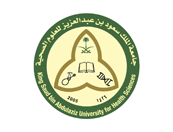Abstract
Purpose: This study examined one case of a federal human capital investment in health professions education by comparing enrollment patterns of underserved students in health professions programs of study in a consortium of community colleges before and after they received a $19.6 million U.S. Department of Labor grant. Method: Pearson's chi-square tests of independence were used to analyze in the proportion of underserved students across the consortium who enrolled in health professions programs of study prior to and after receiving funding and to examine students’ enrollments by program of study length. Results: The changes made by the consortium after receiving the grant funding supported more students from underserved subgroups engaged in health professions programs. Despite the gains seen, Latino and Black students were still significantly underrepresented in associate degree programs, and a significant proportion of Latino students were either delayed or diverted from enrolling in any program of study. Discussion: While there were significant gains for most of the underserved subgroups of students in the study, the variation in enrollment patterns of subgroups of students in programs of study of different lengths provides evidence of persistent systemic educational inequities.
Recommended Citation
Fox, Heather L.
(2018)
"Diverse Pathways? The Impact of a Federal Investment in Health Professions Programs on Enrollment of Underserved Students,"
Health Professions Education: Vol. 4:
Iss.
2, Article 6.
DOI: 10.1016/j.hpe.2017.12.006
Available at:
https://hpe.researchcommons.org/journal/vol4/iss2/6



